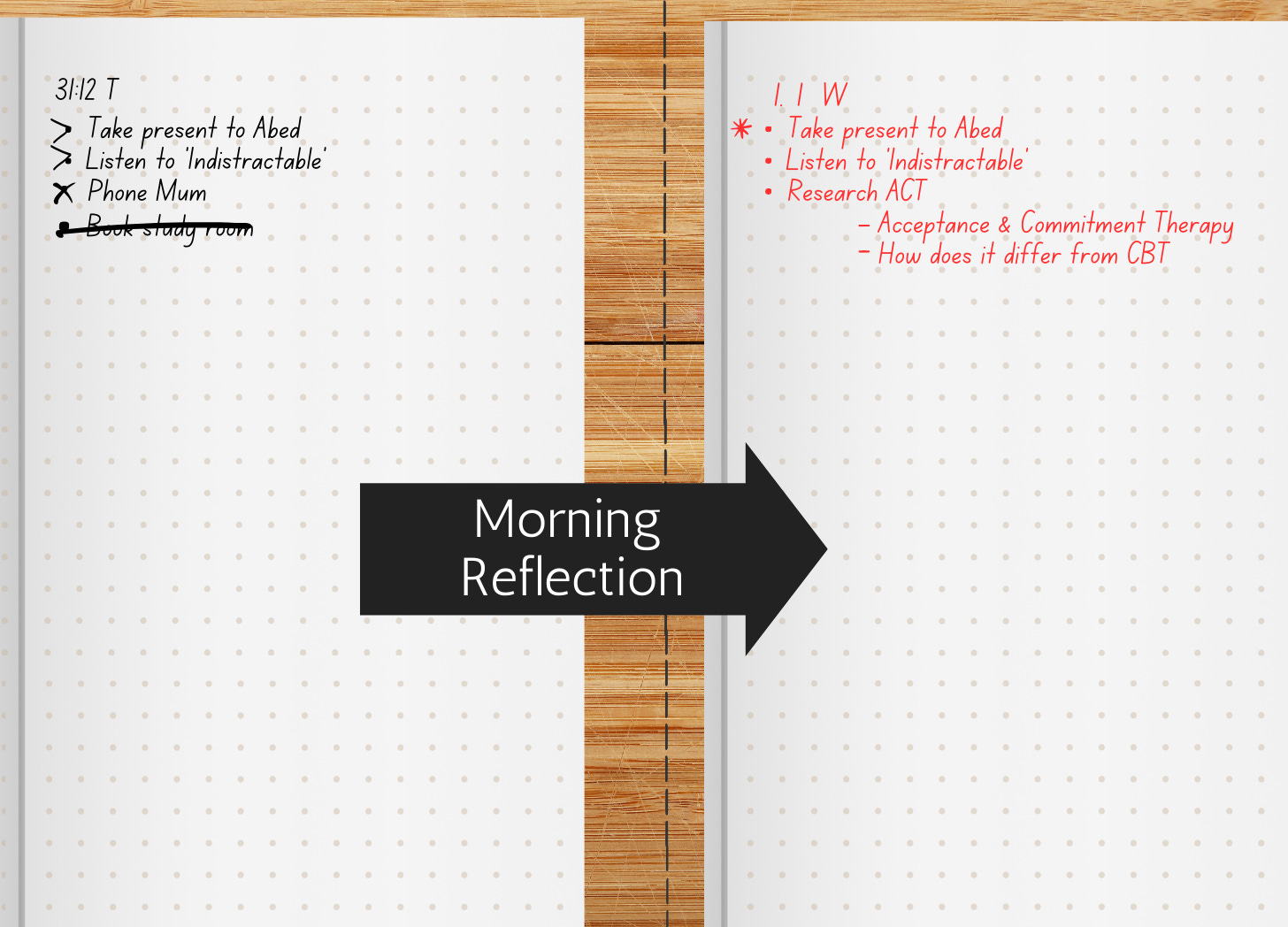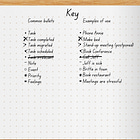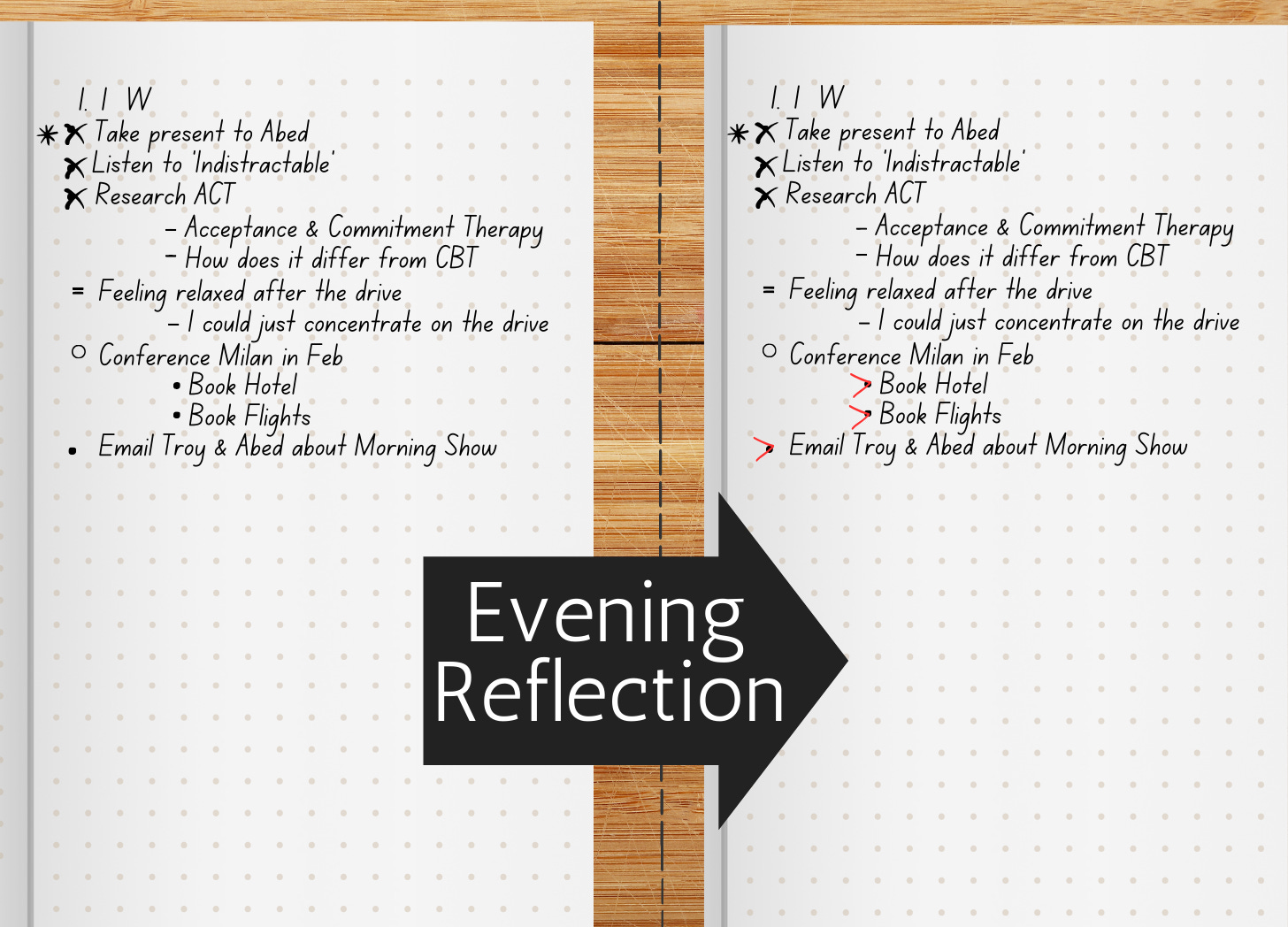How to Use Your Bullet Journal to Process Your Thoughts.
Putting bullet journaling into practice.
A vital part of the bullet journal method is to reflect on your tasks, notes, and feelings so that what you do is intentional and is still of value to your life. These instructions on reflecting and processing your thoughts using the bullet journal method are based on Ryder Carroll’s original ‘The Bullet Journal Method.’ {1,2,3}
(If you are new to the Bullet Journaling Method, see also my previous Substack, ‘How to set up a Bullet Journal in 10 minutes.’ linked below)
A: Morning Reflection
Daily reflections help you get into the habit of taking time to make sure you’re focusing on things that add value to your life.
1. Refer to the previous Daily Log
Look at your last Daily Log and question if anything has changed, such as becoming irrelevant or has now become a priority, etc.
The Morning Reflection, the first of two daily reflections, sets the stage for the day by refining your plan and strengthening your sense of focus, resolve, and direction.
2. Set up today’s log
Following this Morning Reflection, add that day’s date, rapid log thoughts, and mark any priorities.

B: During the day
1. Free your mind
Keep your notebook close to log your tasks, notes, and feelings.
2. Update Tasks
Use the signifiers/symbols in the Key to keep track of each task’s status (look at the Key at the top of this Substack for a reminder of the Bullet Journal symbols and their use).

C: Evening Reflection
1. Review your day
Look over your Daily Log, mark off your tasks, and notice any progress.
2. Process your tasks
Streamline chores by delegating, refining, or eliminating them, allowing more time for vital tasks.
3. Clear your mind
Jot down any remaining thoughts to clear your mind. Sleep peacefully, knowing everything is recorded and ready for a fresh perspective in your next Morning Reflection.
D: Weekly Reflection
1. Review your Week
After a week of bullet journaling, reflect on that week on a new page spread with the dates of the previous week. On this left-hand page, reflect on how your week went - this can be in long hand or bullet notation - whatever you prefer.
2. Weekly Task Log
On the right-facing page, create a task list from this reflection with the following week's dates. The tasks can then be scheduled for that week or added to the Future Log if they need to be planned for a later date.

E: Monthly Reflection
1. Review your monthly tasks and Future Log
At the end of each month, review the pages from the previous month and check the Future Log for unfinished tasks.
2. Process your thoughts
Look at each task and decide whether it adds merit to your life. Use these questions to help you determine what to go after and what to let go of.
a.Are there any consequences if you did it or not?
b.Does it make a difference to your life?
c.Is it essential?
3. Transfer your content
Anything that passes the questions is filtered and transferred (also known in the Bullet Journal community as a Migration) to one of three destinations: the new Monthly Log, the Future Log, or a Custom Collection. (See this Substack for a refresher on these collections)
Personalization of the Bullet Journal Reflection Process
There are multiple ways to customize this system according to your needs.
You can decide whether to have a closer look or a broader overview to reflect on what is coming into your life by selecting weekly and/or monthly reviews. Multiple daily or weekly reflections might take too much time or energy. However, only having a monthly review might be too long before course-correcting toward your goals. The number of reflections may change over time as and when commitments change. You don’t have to decide right now but know you have options.
Remember to check in with yourself regularly to ensure your actions align with your values and personal vision.
You may also want to add an element of prioritization to the method. For example, you could set a maximum number of tasks per day and number them in order of importance. Then, use the daily reflections to check whether this prioritization order is still relevant or needs to change when new tasks or other factors arise.
Another example of personalization is to add a daily element of positivity, such as gratitude or a highlight of the day, which could also be beneficial to encourage self-awareness {4} and reduce stress {5}.
Try the method for yourself, adapt as necessary, and see what works best for you!📖🖋
The Bullet Journal Method by Ryder Carroll ISBN 978-0008261375
Leuchtturm1917 Bullet Journal - Edition 2 booklet
Edy, D. F. and Ashgarie, R. I. A. (2024) “The Role of Gratitude and Forgiveness Toward Self-awareness in Emerging Adulthood,” KnE Social Sciences, 9(30), pp. 232–244. doi: 10.18502/kss.v9i30.17522.
Jans-Beken, L., Jacobs, N., Janssens, M., Peeters, S., Reijnders, J., Lechner, L., & Lataster, J. (2019). “Gratitude and health: An updated review.” The Journal of Positive Psychology, 15(6), 743–782. https://doi.org/10.1080/17439760.2019.1651888






